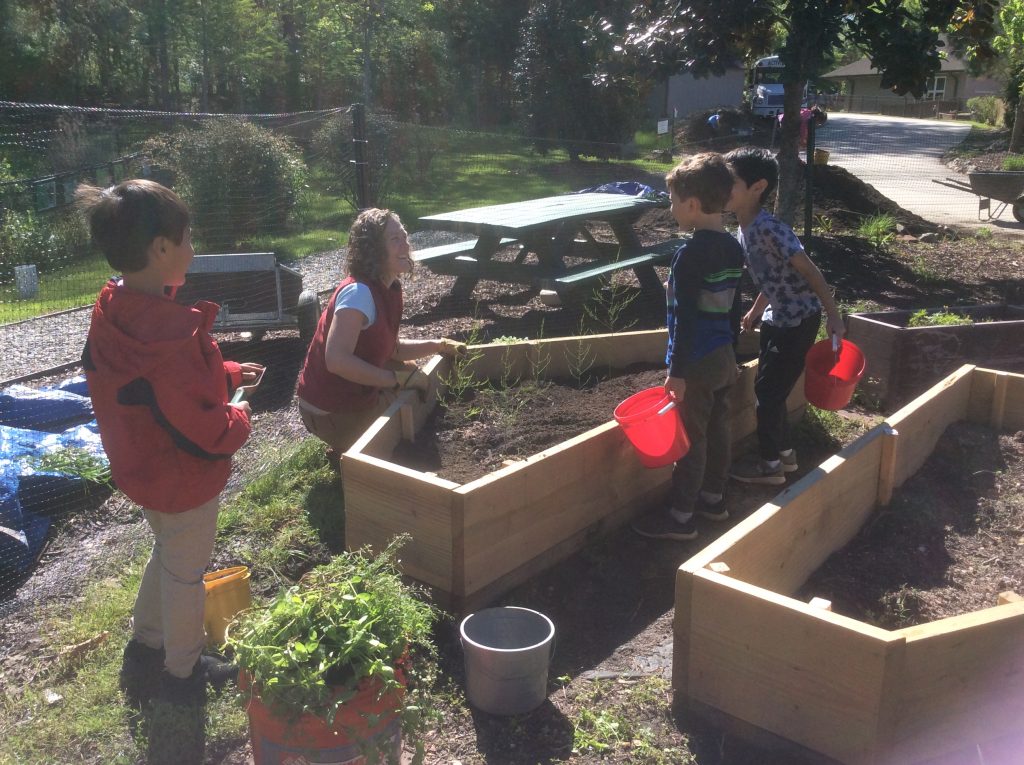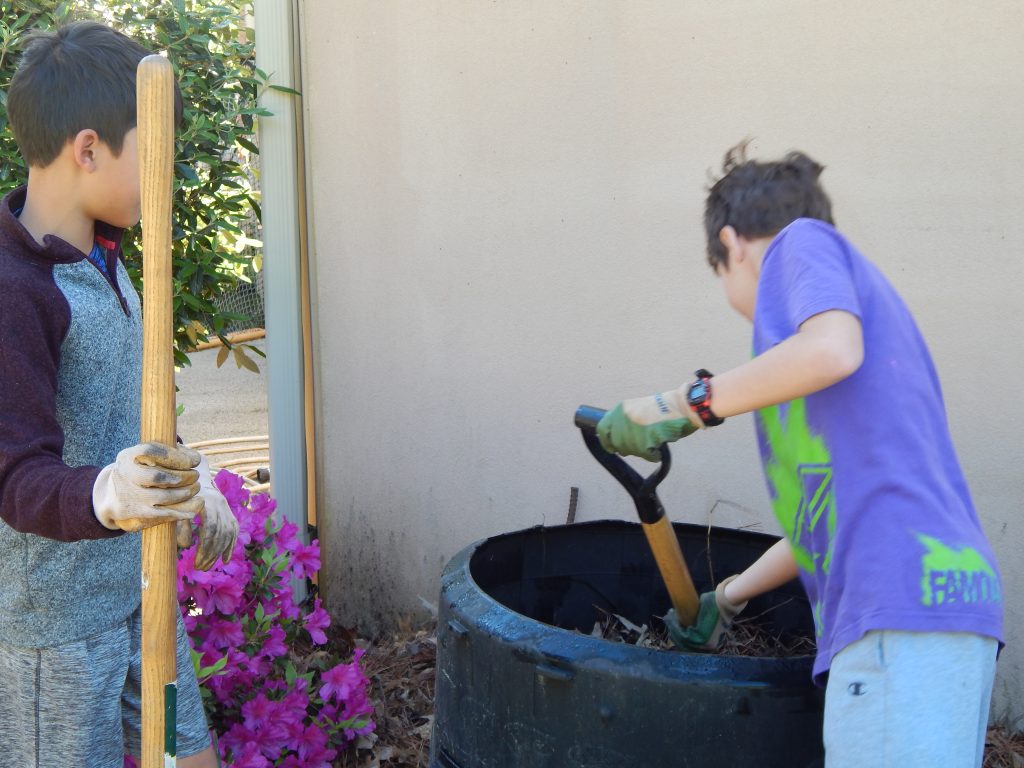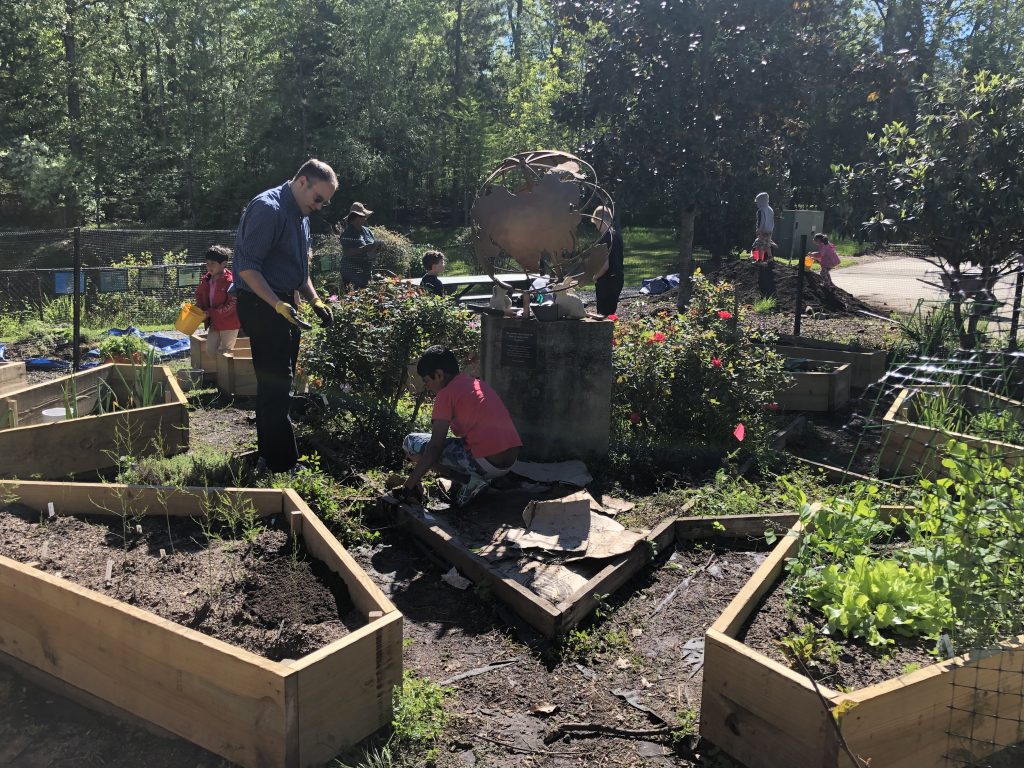One’s Waste Is Another’s Compost
By Kelli Bee, Sustainability, Micro-economy and Math Specialist

Soil. Can you think of a substance that has had more meaning for Humanity?… Most of the world’s people are tillers of the soil and, in a very real way, the soil is their source of life.
-Henry D. Forth Fundamentals of Soil Science
Additionally, I argue that fertile soil is a source of life for us all. Good soil means good produce. Good produce means good food. Good food means healthy people! And healthy people can better contribute their best to our global family.
What is fertile soil, but a mixture of water, air, minerals from broken-down rocks and organic material combined with the hard work of decomposers? Nature does this at its own pace. It may take hundreds to thousands of years to produce just one inch of topsoil. It will take longer in colder and drier regions than in warmer and wetter ones. With a global population of 7.7 billion people, we simply cannot wait for nature to create enough new fertile soil for our food.
We can speed up this process, help nature and literally nourish humanity with compost systems.
As the MCS community transitions our garden beds for the fall and winter season, we get to use our compost created from last year’s waste. Purchasing your morning coffee helps us because Cool Beans composts nearly 100% of the coffee grounds. This translates to roughly one pound of compost per week in a balanced and well-managed compost pile.
Let’s look more closely at the composting system. We throw kitchen scraps away because we don’t need them. These pieces are rich in nitrogen, especially coffee grounds! Dead leaves collected in the fall and slowly added to the pile over the year add carbon for balance with the high nitrogen scraps. Wonderful microbes and fungus digest these pieces, and the product becomes compost. Did you know that there are more microbes in one teaspoon of soil than there are people on earth? Their work is often taken for granted.
Compost is an unsung hero in my mind. Last year’s throw-aways become the nourishment for this year’s harvest! Perhaps it’s the botanist’s circle of life (cue the Lion King music). Our new compost bins near the AC garden have been resting and digesting for the summer. Our current scraps will accumulate and rest next summer to allow the beauty of the microbes to do their work. Transformation takes time. Using what is no longer needed is not always a clear and easy process either.

Last year, the AC did not manage our compost very well. We contained our compost in a tarp and mixed it with leaves from the fall. In the spring, it became very aerobic due to limited air flow and minimal maintenance. This meant it started to create ammonia and lose its nitrogen. It was stinky! At one point, there were some small flies which seemed quite abundant around the tarp. There just wasn’t enough balance of ingredient nor flow of air! Sometimes a weed or two would end up in the compost pile which had seeds. This, of course, creates more unwanted plants in the future. Then there was building the new system which meant digging deep holes in the hard clay and lining every piece up with precision. Last year, compost was something to avoid!
There has been a pleasant surprise this fall. Over the summer a vine started to grow out of the resting compost pile from last year. It reached up into the adjacent pear tree. Hanging from it for the last few weeks have been spiky melons, a relative of the cucumber. We recently harvested a few, cut off the spikes and had our first attempt at pickling! Even when it seems like your compost is really just something to avoid, there just might be something wonderful that comes from it!
Much like life, our garbage, discarded ideas, the dusty tools from previously explored hobbies or projects can be really useful if allowed to be recycled and reused in our local economies. Thrift stores, refurbished electronics and appliances, up-cycled boutiques, and The Scrap Exchange all live on the basic principle of composting. Compost, in essence, is the practice of moving what we don’t use to a new place and caring for it a bit so that it can be useful again and add to our local community, rather than take valuable space on garage shelves and weigh on our mind to ‘clean up’ someday.

So composting takes many forms. As the entire 600 building and MCS use our newly completed composting bins for fertilizing our future harvests, we are reminded that it takes time, effort and some flexibility. Our approach to composting this year will hopefully be more balanced and aerated. It takes time to transform items, places and especially mindsets. As Rumi says,
The ground’s generosity takes in our compost and grows beauty. Try to be more like the ground.
-Rumi
Sources:
Cullen, Mark. And Johnson, Lorraine. Urban Suburban Composter: A complete Guide to Backyard, Balcony and Apartment Composting. St. Martin’s Press. New York, New York. 1992.
Forth, Henry. D. Fundamentals of Soil Science. John Wiley and Sons. New York, New York. 1978
Rumi, Jalal Al-Din. Barks, Coleman Trans.The Essential Rumi. Harper One. San Francisco, California. 2004.
